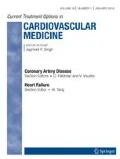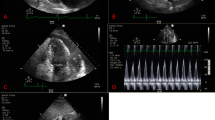Opinion statement
Purulent pericarditis represents a subset of pericardial disease usually due to a non-viral infectious agent. The presentation is often acute, with rapid progression to tam-ponade unless a drainage procedure is performed. Although several infectious agents account for the majority of infections, the differential diagnosis is broad. Often, patients with more exotic infectious causes have risk factors for these agents that can be identified by careful history-taking. Distinguishing a bacteremic source from infec-tion acquired by contiguous spread is particularly important. Although most infections spread contiguously are a complication of recent surgery or nearby pneumonia and are, therefore, apparent to the physician, others may be less obvious. For example, head and neck space infections may track to the retropharyngeal space and, from there, posteriorly to the so-called "danger" space, which connects inferiorly to the mediasti-num and the pericardium. Failing to identify this source of tracking infection may lead to inadequate drainage as well as inappropriate empiric antibiotic therapy. In acute cases, needle drainage with appropriate staining and culturing of the fluid is adequate for diagnosis and initial management of the complications of fluid collection in the closed space of the pericardial sac. Pericardial biopsy may be the sole method of iden-tifying an etiologic agent, particularly in chronic cases in which granulomatous dis-ease is more commonly seen. In select cases, pericardial window or pericardiectomy procedures are needed to limit complications of reaccumulation of fluid.
Similar content being viewed by others
References and Recommended Reading
Kenney RT, Li JS, Clyde WA, et al.: Mycoplasmal peri-carditis: evidence of invasive disease. Clin Infect Dis 1993, 17(suppl 1):S58-S62.
Boyle JD, Pearce ML, Guze LB: Purulent pericarditis: review of the literature and report of eleven cases. Medicine 1961, 40:119–144.
Brook I, Frazier EH: Microbiology of acute purulent pericarditis. A 12-year experience in a military hos-pital. Arch Intern Med 1996, 156(16):1857–1860.
Kohl O, Schaffer R, Doppl W: Purulent pericarditis as an initial manifestation of esophageal carcinoma. Dtsch Med Wochenschr 1999, 124(13):381–385.
Muto M, Ohtsu A, Boku N, et al.: Streptococcus milleri infection and pericardial abscess associated with esophageal carcinoma: report of two cases. Hepato-gastroenterology 1999, 46(27):1782–1784. This article illustrates the propensity of Streptococcus milleri to cause abscess formation. The Streptococcus intermidius group is unique among streptococci in this respect.
Aranda JJr., Tauth J, Henning RJ, O’Hara M: Pseudoan-eurysm of the thoracic aorta presenting as purulent pericarditis and pericardial effusion. Cathet Cardiovasc Diagn 1998, 1:63–67.
Estok L, Wallach F: Cardiac tamponade in a patient with AIDS; a review of pericardial disease in patients with HIV infection. Mt Sinai J Med 1998, 65(1):33–39.
Arsula EL, Kilgore WB, Strategos E: Purulent pericarditis misdiagnosed as septic shock. South Med J 1999, 92(3):285–288.
Brichacek B, Swindells S, Janoff EN, et al.: Increased plasma HIV-1 burden following antigenic challenge with pneumococcal vaccine. J Infect Dis 1996, 174:1191–1199.
Strang JL, Kakaza HH, Gibson DG, et al.: Controlled clinical trial of complete open surgical drainage and of prednisone in treatment of tuberculous pericardial effusion in Transkei. Lancet 1988, 2:759–764. This article and that by Strang et al. [11] are the largest series demonstrating the benefits of steroids in tuberculous pericarditis.
Strang JL, Kakaza HH, Gibson DG, et al.: Controlled trial of prednisone as adjuvant in the treatment of tuberculous constrictive pericarditis in Transkei. Lancet 1987, 2:1418.
Soler-Soler J, Permanyer-Miralda G, Sagristà-Sauleda J: A systematic diagnostic approach to primary acute pericardial disease. The Barcelona experience. Cardiol Clin 1990, 8:609–620.
Mercé J, Sagristà-Sauleda J, Permanyer-Miralda G, Soler-Soler J: Should pericardial drainage be performed routinely in patients who have a large pericardial effusion without tamponade? Am J Med 1998, 105:106–109. This article and the other articles by these authors [12,15] answer key questions in the management of pericarditis.
Estok L, Wallach F: Cardiac tamponade in a patient with AIDS. A review of pericardial disease in patients with HIV infection. Mt Sinai J Med 1998, 65:33–39.
Permanyer-Miralda G, Sagristà-Sauleda J, Soler-Soler J: Primary acute pericardial disease: a prospective series of 231 consecutive patients. Am J Cardiol 1985, 56:623–630.
Corey GR, Campbell PT, Van Trigt P, et al.: Etiology of large pericardial effusions. Am J Med 1993, 95:209–213.
Defouilloy C, Meyer G, Slama M, et al.: Intrapericardial fibrinolysis: a useful treatment in the management of purulent pericarditis. Intensive Care Med 1997, 23(8):925–926.
Mayner J, Corral E, Manzano A, et al.: Intrapericardial streptokinase fibrinolysis in the management of purulent pneumococcal pericarditis. Intensive Care Med 1999, 25(3):338–339.
Author information
Authors and Affiliations
Rights and permissions
About this article
Cite this article
Goodman, L.J. Purulent pericarditis. Curr Treat Options Cardio Med 2, 343–350 (2000). https://doi.org/10.1007/s11936-996-0008-8
Issue Date:
DOI: https://doi.org/10.1007/s11936-996-0008-8




